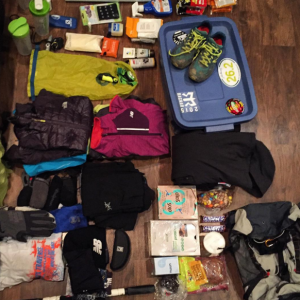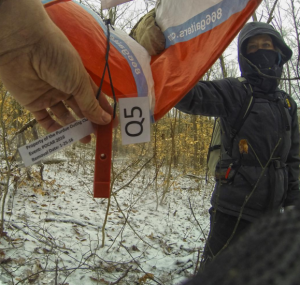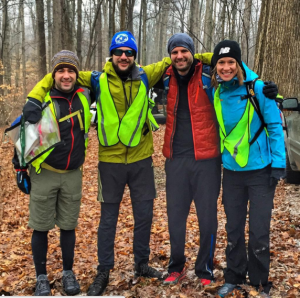What I Tried This Week: A 48 Hour Winter Rogaine Race

As a runner, I am always searching for ways to improve, grow and stretch my boundaries. This past month, I was worried that I may have gone a little too far.
I agreed to participate in a 48 hour Rogaine style adventure race in the backwoods of Indiana called POCAR. That in itself is not that unusual for me, as I have done similar races before, however, what truly concerned me was the idea of 2 days in the unrelenting winter cold.
A rogaine race is different from an adventure race. A rogaine race is the sport of long distance cross country navigation with a map and compass, while adventure racing is a combination of two or more endurance disciplines, including orienteering and navigation, cross-country running or trekking, mountain biking, paddling and climbing and related rope skills.
 Both types of racing call on my background as an endurance runner and add unique challenges. To prepare for the challenge of a winter race, I prepared by packing as many layers as humanly possible.
Both types of racing call on my background as an endurance runner and add unique challenges. To prepare for the challenge of a winter race, I prepared by packing as many layers as humanly possible.
This race was self supported so I needed to prepare to carry everything I needed to be out on the course for 48 hours. With this knowledge, I packed calorically dense food such as trail mix, snickers bars and dried fruit.
The race morning was cold and icy, but clear. We headed out at 10:45 AM for the first of three legs of the race. In this leg, we faced a mixture of trail, road, bush and streams as we scrambled through the Morgan Monroe forest in search of over 30 check points.
The terrain was quite hilly. Although they do not have mountains in Indiana, there are multiple ridgelines, making for a very steep race witnessed in over 3,300 m of elevation gain our team had over the course of the race.

We completed the first section of the race before nightfall and plotted our next set of check points, heading out after sunset. The navigation becomes increasingly difficult at night and combined with plummeting temperatures, it makes for an interesting challenge.
We completed our next set of check points in record time and set out for our final leg at approximately 1 am. This is where our race took a turn as we were confused by a misplaced check point and spent a number of hours lost.
As the sun came up, we found our way and were able to locate the remaining checkpoints, coming in to the finish line at 28 hours of racing, 120 km covered and fourth team overall.
For my first long winter race, I learned a number of key things to keep myself warm, well fed and comfortable:
- Hand and feet warmers are a life saver. I brought a multipack of the heat pads and replaced them every 6 hours. My hands and feet were kept warm the entire race.
- Switching base layers whenever possible is vital. I switched out my base layers approximately every 6 hours as well, opting for warm, sweat wicking fabrics like merino wool.
- High fat food is wonderful in the cold. My favourite snack was cold pizza I wrapped up from a pre-race order and little snack balls made of coconut oil, dates and nuts.

This race was a unique and interesting challenge for me. Running is often a very individual sport so it is a great way for me to work as a team and incorporate running and adventure.
You can find me on twitter @lacesandlattes and my personal blog.


